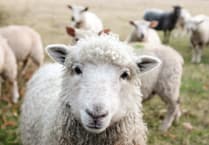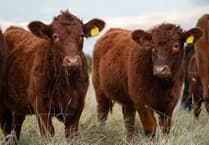Dairy farmers’ profits dropped more sharply than many expected in 2023/24, but rising milk prices mean the outlook is significantly brighter for the year ahead.
That’s according to the annual Milk Cost of Production report by Old Mill and the Farm Consultancy Group (FCG), which examined dairy client accounts with a 31 March year-end. The report showed that average income from milk in 2023/24 was £2,910/cow – a drop of 19 per cent year-on-year, due to lower milk prices. The cost of production remained high at £3,153/cow, leading to a shortfall of £243. “It was only through selling stock that most businesses managed to remain profitable,” explains Andrew Vickery, head of rural services at Old Mill.
After accounting for non-milk income, but excluding Basic Payment Scheme income, rent, interest, drawings, tax and capital expenditure (and including depreciation and a labour charge of £30,000 per full-time partner or director), businesses averaged a profit of £152/cow. Last year that was £914/cow. “The five-year profitability average is £478/cow, showing that milk prices have been notably low this year,” says Mr Vickery.
The average herd size fell from 303 head to 295 head, while yields dropped from 7,906 litres to 7,256 litres/cow due to poor silage made last year.
Although feed costs dropped from their 2022 high, labour and machinery costs increased – particularly as many businesses bought new kit in early 2023 to offset looming large tax bills.
“These changes could be emblematic of a changing dairy industry,” he adds. “The ‘cost of doing work’ are increasingly key to financial performance, whereas in the past, feed and other variable costs took the headlines.”
This cost of doing work is also the key differential between the top 10 per cent of performers and the bottom 10 per cent . “Given that these costs are often fixed, it shows that life for the smaller herds shows no sign of becoming easier. Tellingly, there is a difference of 237 cows between the average herd size of our top performers (404 cows) and the smaller herds of our bottom 10 per cent (167 cows).”
The top 10 per cent had much higher yields, receiving £629/cow more for their milk, but the difference between costs of production widened markedly, year-on-year, from £163/cow to £1,752/cow. “The bottom 10 per cent were unable to cut their spend in this time of reduced prices, which led them to making a loss of 15.73p/litre compared to a profit of 12.65p/litre for the top 10 per cent ,” says Mr Vickery. “However, there are a variety of farming systems in the bottom 10 per cent , showing that farming efficiently relies on the farmer and not the system.”
A particular difficulty over the past six to nine months has been cash flow, with many businesses paying large tax bills at a time of falling milk prices. “Though we are forecasting a significant turnaround in profit for the year ending March 2025, it doesn’t feel like that looking at current cash flows,” says Gerard Finnan at the Farm Consultancy Group.
Knowing the difference between profit and cash flow – and managing both – is vital. All businesses should define their aims and goals, and benchmark against others to identify strengths and weaknesses on which to focus, he adds. With milk prices now on the rise, the 2024/25 milk year is expected to return a milk income of £3,308/cow against a cost of production of £3,122/cow. On average, profits are predicted to rise to £590/cow.





Comments
This article has no comments yet. Be the first to leave a comment.